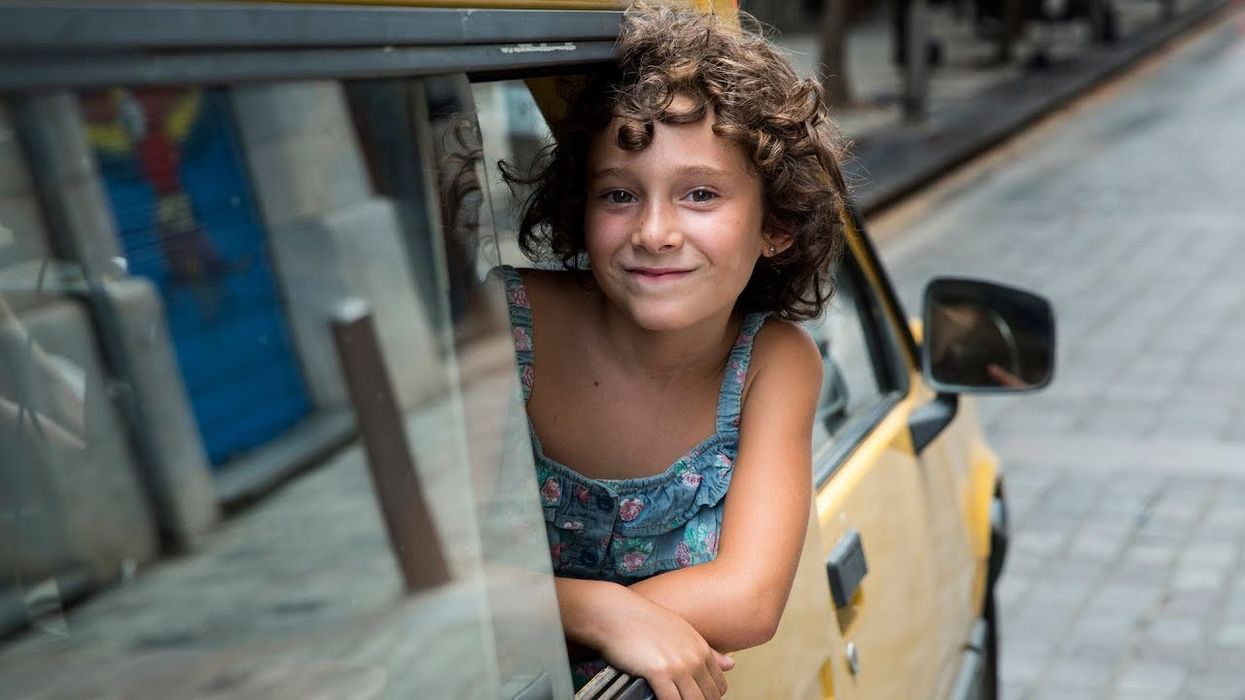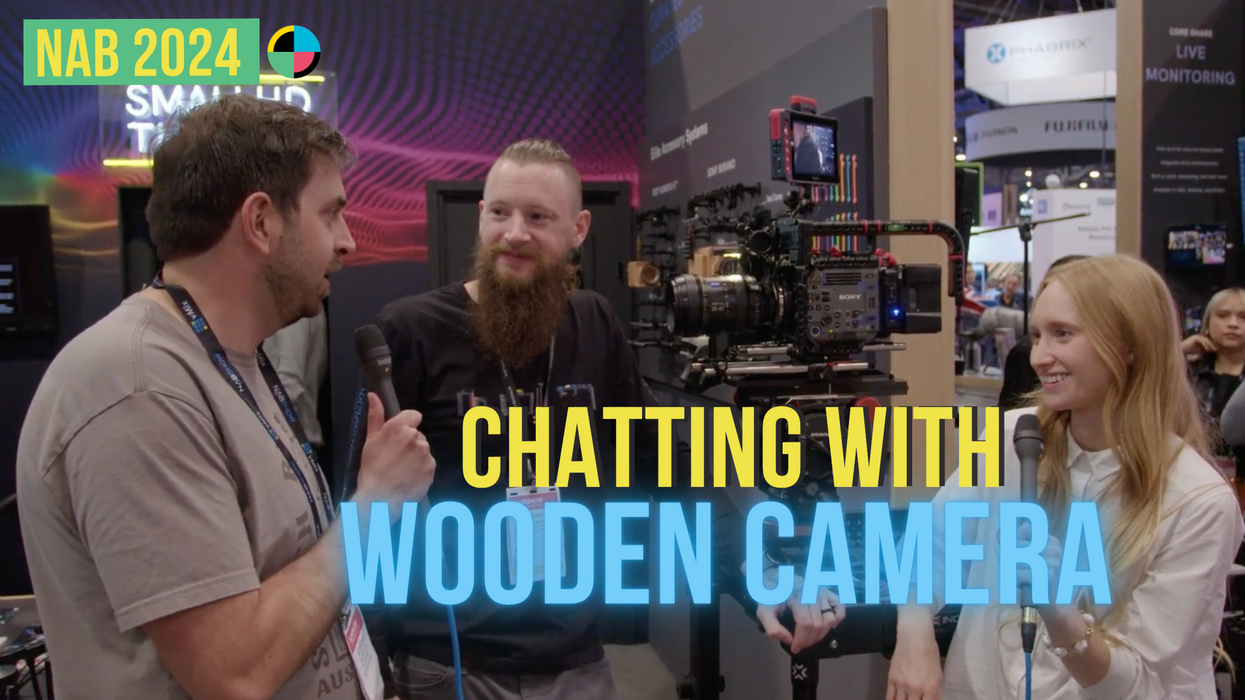'Summer 1993': How to Shoot an Award-Winning Film About Your Own Life
'Summer 1993' director Carla Simón reveals the complex process of weaving her memory into fiction.

When one experiences trauma as a child, it can be difficult to talk about well into adulthood. Carla Simón decided to turn her childhood trauma into a cinematic memoir. Summer 1993, Simón's new film, is the autobiographical story of the summer she was orphaned. At six years old, Simón, in the film named Frida, left Barcelona to live with her aunt in the Catalonian countryside. She is old enough to understand the concept of death—in fact, she is obsessed with asking questions about the myriad ways a person can be killed—but far too young to contend with it emotionally.
Simón masterfully embodies the perspective of a child. The camera is tethered to Frida's subjectivity while the adults around her constantly minimize it; they talk about and take pity on the young child, hovering just out of frame while we remain rooted on Frida's face as it searches for answers but never finds them. Not since Jacques Doillon's 1996 film Ponette has cinema seen such a heartrending portrait of the interior life of a grieving child.
No Film School recently sat down with Simón to discuss the complex process of disentangling her memories from the needs of the film as a fictional narrative, the improv-based approach she took to working with very young children, and more.
No Film School: You can feel how deeply personal this film is for you. It has the texture of memory. I found the idea of making a cinematic memoir really interesting. How do you even begin to tell your own story in the screenwriting phase?
Carla Simón: First, I went to my [childhood] house. I spent some days there talking to my [adoptive] parents. They told me about specific memories. I also tried to think a bit about my memories, but when something like that happens and you're a child, the memory kind of erases. I didn't remember specific moments. I remember more like emotions and feelings. It was very useful to scan all the photos of my childhood—they kind of [jogged] the memories.
The first draft of the script was just a collection of moments; it didn't really have a structure. It didn't work as a film. So I had to stop and read a lot about children's psychology—how they face death, what they understand about death, and also about the adoption process. This was very useful for me to draw the emotional journey of Frida. It also gave me some distance from my story.
In the end, I would say that maybe there are five scenes that are real memories, but the rest is fiction.
"The feeling of home video was a way to translate this memory of my childhood into the film."
NFS: How was the process of separating your own emotional attachment to your story in the service of creating more dramatic tension?
Simón: It actually was a beautiful process. The hard part was when I realized that I wanted to include the presence of my biological mom, but I didn't remember her. This was a bit difficult for me because I had to make an effort to define who she was. I tried to find a way to recover her memories.
It was more difficult during production. I had this internal fight because I had these images in my mind from my childhood, but I knew that if I tried to compose these images in the way I had them on my head, I would not be looking at what was in front of the camera. I would be trying portray something that was very abstract and maybe didn't work for the story. So I had to learn to just look at the girls and the actors and the locations and try to tell the story with the elements that were really there. I had to drop my images and create new ones.
When I got to the editing room, it was like, "Oh my God, I don't have my images. These are different!" But then I realized that they were also telling the story, and that is what was important in the end.
NFS: I read that you improvised with the children as a family for a couple days in order to make their performances feel more natural. How did you facilitate that process?
Simón: Well, first, the casting was important because we looked for girls that were like the characters in terms of personality so we could work from what they were already. Then, we spent more or less a couple of months meeting often with the girls and the adults, and we improvised these moments that happened before Summer 1993. We worked a lot on the fact that Frida had her mom in the hospital and had wanted to go and see her. We also worked a lot on the relationship between Marga, Esteve, and Anna because they are family so they spent a lot of time together. They went shopping, for a walk, cooked cake—things like that. We worked to create a lot of intimacy between them. It was important to create normal moments, and then we improvised with these moments.

Simón: We also rehearsed all of the scenes of the film, but we did it in a very loose way because the girls never read the script. The little one is four, so she cannot read. We just went to the locations and spent a couple of weeks there. It was very useful for me to know how to get everything I needed from [the children], but also for them to know what we were going to do [when we started] shooting. We shot six weeks, but could only shoot six or eight hours per day, so it was fast. I would guide them through the scene, and if I wanted them to say something very specific, I would say it, and they would repeat it. There were some scenes that were a bit more flexible, so the children could be creative and improvise a bit more.
"It's difficult to make a film as a form of therapy, because then it's difficult to portray the complexity."
NFS: Since there were so many unpredictable elements with the children and improv involved, how did you conceptualize the cinematography?
Simón: The conception changed a lot. We had a long journey before [production]. In the beginning, we imagined something that was more aesthetic and more staged. Then, we realized that we needed to adapt to the girls, so we changed this idea and we tried to find a way to shoot that was not too intrusive. We decided to make the camera movements very simple. We really liked the idea of having long shots because it gave us this sense of reality and being in the moment with the family. And, honestly, the feeling of home video was a way to translate this memory of my childhood into the film.
We made one rule: always to be on the girls' level and tried to tell the story from her point of view.
Until the very last day of production, the girls looked at the camera. But they kind of got more and more used to doing long takes and repeating the action. The important thing was that the camera was not in their way—it would be in a corner, and we would film from there.

NFS: How was the editing process, given that you shot so many long takes?
Simón: We didn't have a lot of footage because we didn't have that many days of shooting. Basically, during [the editing process], we tried to not be so radical about the idea of the long shot. If there was a take that only partially worked and we needed to edit it with another take, we would just break the long shot in two shots.
We always had it in mind that this was Frida's story. All of the close-ups of her are in the film. We tried to simply focus on her emotions. We shot some beautiful scenes of the children of the village playing games with Frida, but we realized that it took us a bit out of the story and Frida's emotions, so we had to take these scenes out, even though it was very hard.
NFS: What is important, technically, if you're trying to make a film from a child's perspective, besides what you already said about maintaining the low camera height?
Simón: For me, it was very important to understand the psychology. I did not want to simply portray a child that is innocent; I think that kids have a complex psychology. It's very difficult for them to manage their emotions. They can understand a situation—Frida can understand death and what it means and the fact that she's never going see her mom again, but she doesn't have the tools to deal with emotions. Because of that, she ends up acting out in a way that adults maybe cannot understand. But she's acting like that because she cannot express herself. So it was very important to understand how children sometimes act out in a way that we understand as misbehaving, but in the end, it's because they are hurt or they feel abandoned, or something like that.

NFS: If you were to give advice to somebody who wanted to write and direct a film about something that happened to them—a cinematic memoir—what would you say?
Simón: The easy part about [making a cinematic memooir] is you're writing about something that you know very well. You know the material. You know the questions that people may ask you about this character.
But the difficult part is that you obviously have an emotional attachment to all the elements, and you have to learn to prioritize and see what the larger story is. I think it's important that you feel okay with the aspect of your life that you are making a film about. It's difficult to make a film as a form of therapy, because then it's difficult to portray the complexity. So if you have an open wound, it's harder.
For me, this was something that happened in my life, but I felt very open about it. I'm okay with it.
In the end, you have to take some distance and think about the story in terms of fiction in order to make it work as a film. You have to think about the audience. If you are not okay with [the life event], I think it's difficult to be able to take this distance.
For more information on 'Summer 1993,' click here.












